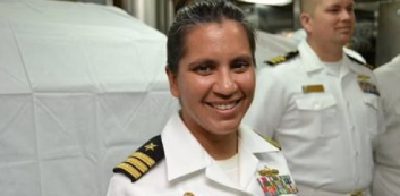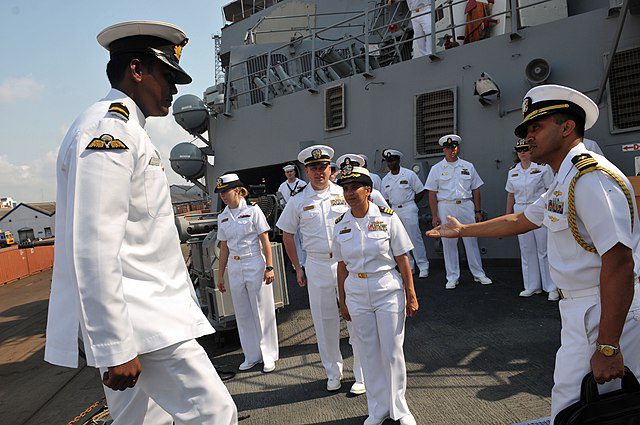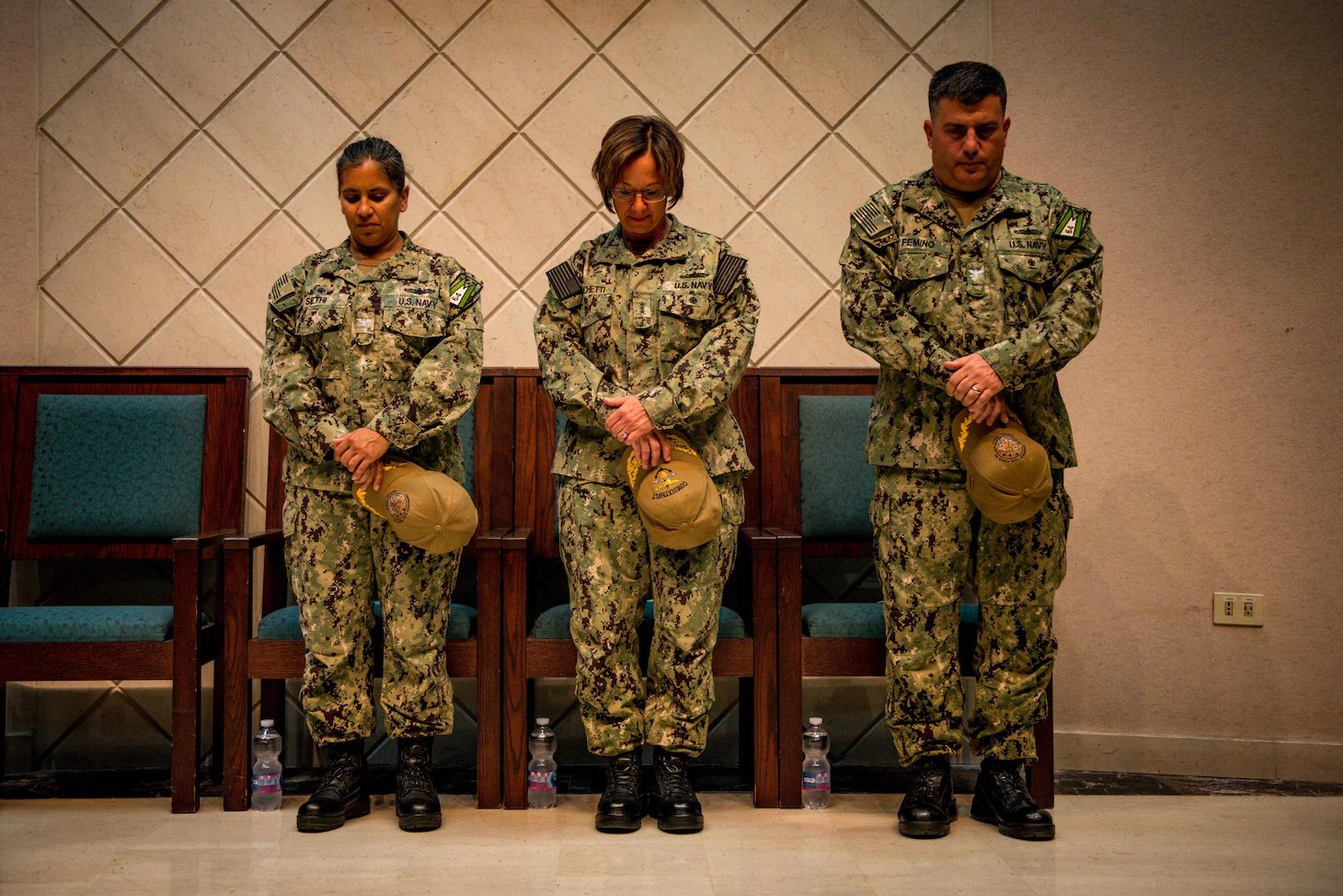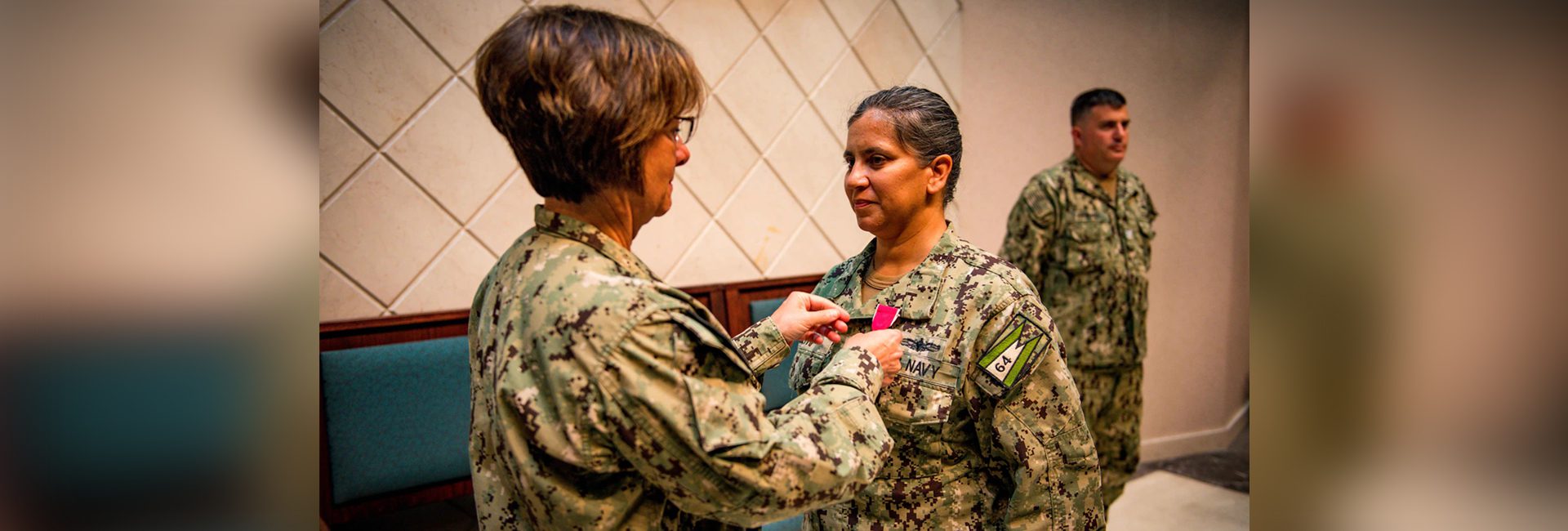(June 5, 2022) ‘Trailblazer’. The term follows US Navy veteran Shanti Sethi, as a quick Google search will tell you. The first-Indian American commander of a major US Navy Combat ship, Shanti was appointed to the office of another pioneer – US Vice President Kamala Harris, in February 2022. Speaking to Global Indian on an early morning call from her home in Washington DC, where she lives with her daughter, Shanti describes her journey to the topmost ranks of the US armed forces, her experience as the commander of a warship and how she made it to the White House, as well as the stereotypes she broke along the way.
A life on the high seas
In March 2011, there was much excitement across the country when the USS Decatur, a guided missile destroyer from the United States navy, docked in Chennai. That collective excitement only multiplied when they learned that the ship’s commander was not merely Indian-origin, she was an Indian woman making history. It was a moment of many firsts for the courageous navy vet, who recalls the years spent at sea as some of the most beautiful in her life.
“There’s nothing better than a sunrise at sea, when there’s nobody else around,” Shanti smiles. “I never thought being in the Navy would be a career. Every time I reached a turning point, I would stop and think about what I love and I realised that what I loved was being in the Navy. She has come a long way since, working in different departments of the Navy, going from a life at sea to working as an Operations Director for the Navy and travelling the world for work.

US Navy veteran Shanti Sethi
The early days
Shanti’s Indian roots come from her father – her grandparents, she said, hailed from Northern India (now Pakistan). Her father arrived in the US in the 1960s, having been raised in Delhi. When her parents split, Shanti and her brother stayed with her Canadian-origin mother in the United States. She stayed in touch with her Indian-ness through her father’s relatives and recalls travelling to Delhi to visit family as a child.
Shanti joined the Navy in 1993, “It was an accident, actually,” she remarks. “My intention was to join the army, not the Navy per se.” It wasn’t an unusual move for a graduate from Norwich University, which is known for its longstanding army traditions but perhaps so for a woman. She speaks with levity today but when has entering a male dominated world been easy for a woman? What’s more, the Combat Exclusion Act was still in force and women were not allowed in combat zones. The partisan act was lifted not long after but when Shanti first enlisted, there was much she could not do. “I couldn’t be part of the infantry,” she says. However, there were loopholes in the Navy – women were allowed to operate ships and “do the things that the Navy was about” even if they couldn’t enter combat. Here, she would have the chance to sail her own ship.
Finding authenticity as a woman in a man’s world
“I have had to tough it out in a lot of ways and there were bad experiences. But the bad was always balanced by the good in my life. If there was a sexist incident, there were also people who were supportive.” There were always little niggles – a dress code that catered only to men, for instance. “We were told to wear dress shirts with collars. Women’s dress shirts don’t have collars, our casual shirts do. We’re happy to follow a code but it’s confusing to us. And how do you explain this to the people in charge? Yes, these are little things but it’s a little thing all the time, until you learn how to deal with it.”

Photo courtesy: Shanti Sethi
Her petite, Asian build didn’t always serve her either. “People assumed I didn’t have the know-how for a highly technical environment,” She recalls. “That was quite funny – the Indian diaspora is full of tech guys. I studied international relations and, in my family, I’m an outlier. I have one aunt who is an engineer and another who is a mathematician.” While this could have been caused by racism, it was often just ignorance, she says. “There was one person who tried to teach me hydraulics and I thought, ‘well, I’ve known that since I was 12 but you know, thanks for sharing’.”
Shanti attempted to counter this by being tough and aggressive. “But that’s not who I am,” she shakes her head. “I thought I had to have this persona but actually, I’m a little bit goofy and a free-range thinker. Sure, that doesn’t fit a military image but you can’t pretend either. My fellow officers could always pick up on insincerity. It was a hard lesson but fortunately, an early one.”
Commanding the USS Decatur and the liaison to Congress
After serving a little over four years on ships as a junior officer and learning how to lead in small groups, Shanti came back ashore to Naval Academy, returning to sea in 2000. “I was happy. Being at sea is what I like. That’s what kept me coming back.” She returned to sea the following year, met her ship in Singapore and arrived in San Diego on September 11, 2001. “We could hear the news of the World Trade Centre on the radio,” she says.

Shanti as commander of the USS Decatur
As she moved up the ranks, the time she spent at sea decreased in exchange for a management role. She had received her command in only 13 years, much earlier than the customary range of anywhere between 17 and 19 years. She was posted in Texas as a coastal minehunter and “had about 60 people working for me. She was then named the Service Navy Liaison, working with Congress.
Shanti spent two years as the navy’s liaison before returning to sea in 2010, this time as the commanding officer of the USS Decatur, an Arleigh Burke-class guided missile destroyer. “That was the ship I brought to Chennai in 2011,” she states. “It was a really wonderful port visit. Many of my sailors hadn’t been to India because we usually stop at our US Navy base in Singapore. I thought the port at Chennai was lovely.” She describes the experience as one of her favourites, she has always wanted to return to visit India. “I was eight weeks old when I first came to India and I continued to visit family there till I was around 10.”
The return to land
In July 2015, Shanti took over her new role with The Joint Staff, working as an executive assistant to the Director of Joint Operations. Two years later, she was named the Commanding Officer of Task Force 64. This Naval task force was responsible for defending NATO Europe against ballistic missile attacks from Iran, served as the Integrated Air and Missile Defense Advisor to the Commander of Striking Forces NATO and as Director and Tomahawk Strike Coordinator for the U.S. Sixth Fleet during its operations in Syria. In August 2019, as Chief of Staff, Shanti directed a 100-member team responsible for the operational analysis of navy programs and led the Integrated Naval Force Structure Analysis, 2020. In 2021, she became a senior military advisor to the Secretary of the Navy.

Commander, Task Force (CTF) 64 welcomes Commodor Shanti Sethi (2019). A US Navy photo
Going from being in command to being the one who makes photocopies is always hard,” Shanti chuckles. “It’s definitely a way to keep your ego in check, though! Always a reminder that you can go from being queen to putting a binder together.” Prosaic though it was, her new roles allowed her to better understand the decision-making process, all the way to the highest levels of authority at the White House.
To the White House
Life rarely goes according to plan,” Shanti says, for the second time in our conversation. “I had applied for another job, which I didn’t get. Later, when they were looking for someone to fill the executive secretary role – it usually requires a military background, they had my CV already and ended up asking me to interview. That’s how I was appointed to the Vice President’s office.” At the White House, she coordinates national security advisor documentation across the office of the Vice President.
Shanti Sethi is keen to reconnect with her roots – “I want to visit Delhi once more and my daughter is quite keen to learn Hindi as well.” Her daughter, not visible in the camera frame, concurred enthusiastically, calling out, “Mum, I want to learn Indian.” Shanti now lives in Washington with her daughter and their two pets.
- Follow Shanti Sethi on LinkedIn




